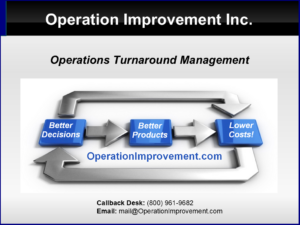Strategy Versus Tactics
Dilbert and His Boss
There are two sides to an old argument, and I have heard both many times and in many circumstances.
The debate usually begins like this: Dilbert, who is a salesman, agent, operator, mechanic, accountant, engineer, programmer, or some other front-line soldier of business, puts the discussion in play.
“What a disaster in the making! Our new boss has no clue about the details of this business. No doubt they teach them in school that managers need not know the business to run it. This happened at the last place I worked, and they closed in less than a year. Better get your resumes ready!”
The other side of the coin is usually argued by a generalist manager who, by their protests, identifies themself as the boss that Dilbert is talking about. They want to defend their contribution to a company’s success.
“Well, I was hired to turn around XYZ, Inc., and I did it in less than a year! I reorganized (or reprioritized, rescheduled, relocated, re-incentivized) the organization with retreats, goals, Monday staff meetings, MBO, metrics. I don’t have to know what I am measuring to interpret the data. There is a place for the professional manager. Why, just look what happens to a company when they put an accountant, engineer, or a salesman in charge!”
We have all seen situations or heard stories that would seem to support both positions. This leads us to think that there might be an underlying condition, a hidden “if” that tilts a case study to one position or the other.
What Is It About the Organization That Needs Fixing?
In some businesses, operational flaws are minor, and the organization needs a cohesive vision and strategy. Such a business has well-designed processes and a tactical workforce that understands the business product.
Without direction, the best tactical teams often lack focus. A new manager may remedy this problem without spending a lot of time deep in the nuts and bolts of operations. The perfect analogy is a parked car with no place to go, its finely tuned engine running, waiting for a driver and destination.
Competent tacticians who are quite comfortable with tactical decisions are often paralyzed by strategic choices. When an issue is purely tactical, a T ledger can be made of pros and cons, or a clever programmer can code a decision tree. Even if some of the inputs are probabilistic (e.g., 40% chance of project delay due to weather), it is still possible to reduce the issue to a data-driven solution.
When tacticians are confronted with choices that require weighing values and qualitative risks or picking one of three alternatives, many tacticians find themselves in a Hamlet loop. They will debate the “To be or not to be” of the issue endlessly and without resolution. After exhausting everyone with all of their reasons for an initiative, they can return from a break with a hundred and one reasons against, suddenly opposing the position they just held before lunch.
One successful turnaround manager said, “My new staff had fourteen different visions of the company mission.” His success depended on getting the organization to focus on one vision, and not upon learning the details of each technician’s job.
But what if the organization is not a finely maintained and tuned race car looking for a driver? To continue the analogy, what if the car has not been maintained? What if parts have been removed and not replaced because they were too much trouble? How do you make an operation right, and then make it better?
Eventually, Management Needs to Get into the Details
I’m wary of the turnaround experts who brag that they can always “move the numbers” without knowing the operation. Many organizations in trouble have problems that go deeper than motivation, vision, and focus.
Sometimes managers fool themselves. They think improvements have been made, and they haven’t. A problem seems to disappear only to pop up somewhere else.
I know (and can uncover) most of the tricks to transfer costs from the business to the customer or to the employee, from the P&L to the balance sheet, from one department or plant to another, and from the short term to the long term. Such zero-sum changes to a business do not improve the operation and usually cause harm.
A further complication is that many traditional performance metrics are lagging indicators and can temporarily move in the wrong direction during periods of transition. I have two real-life cases that I have used in training classes where operations service level statistics temporarily became better as customer service got worse.
Managers who do not understand their business processes are terrified of a transition when the metrics are providing misleading feedback, and they often say, “I’m scared to run the business right!”
Eventually, all managers must develop an understanding of the details of their business operation. Those managers fortunate enough to inherit a capable tactical organization will eventually need to turn their attention to sustainment. Those who inherit an operation with incapable processes need details as a prerequisite to focus and vision.
As I have said in our Management Philosophy, “You need not be a surgeon to discuss brain surgery, but you should at least be able to define brain and surgery. If it is true that you can’t effectively manage without measuring, you surely can’t manage what you cannot define.”
© Operation Improvement Inc 2025. All rights reserved.





